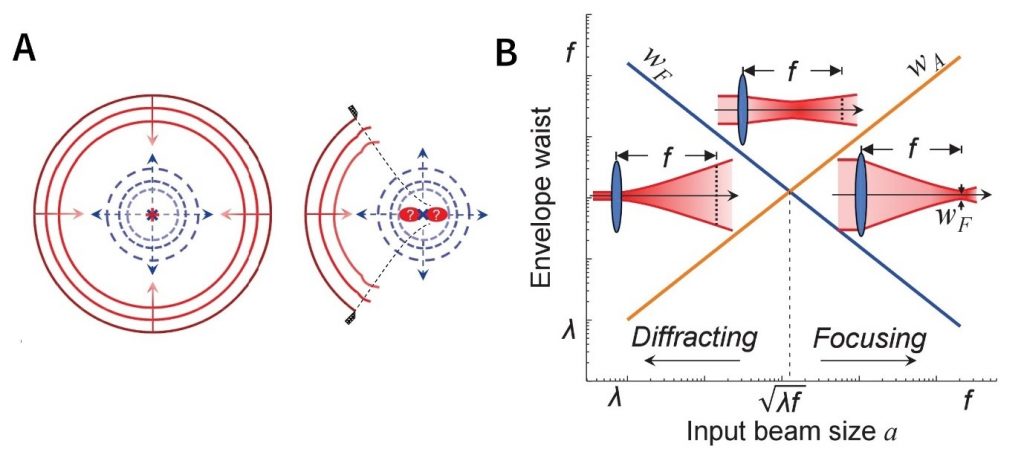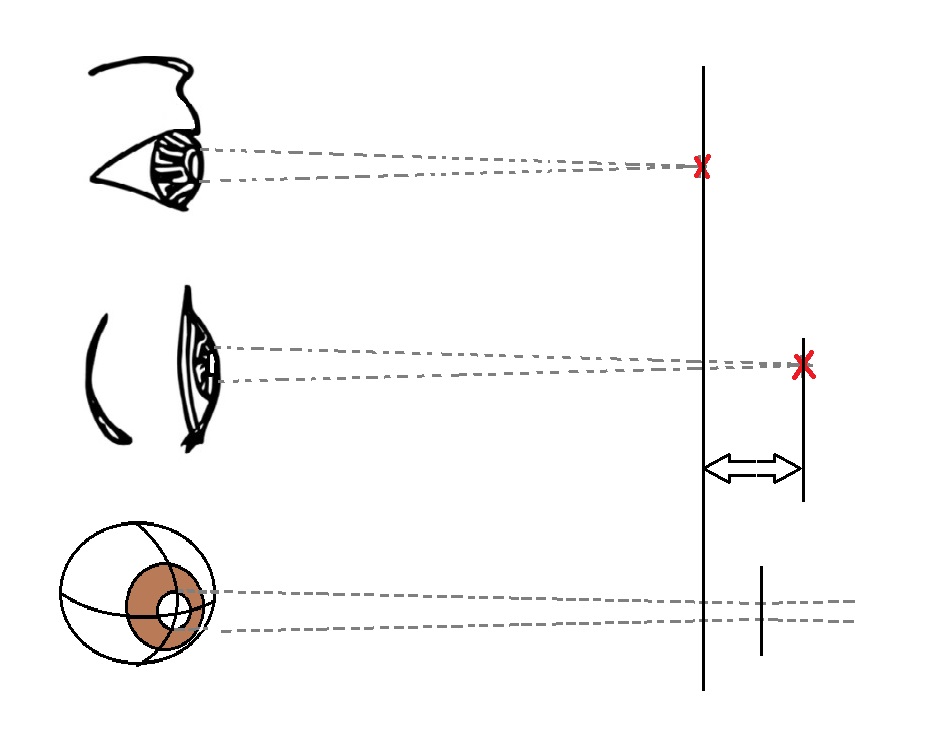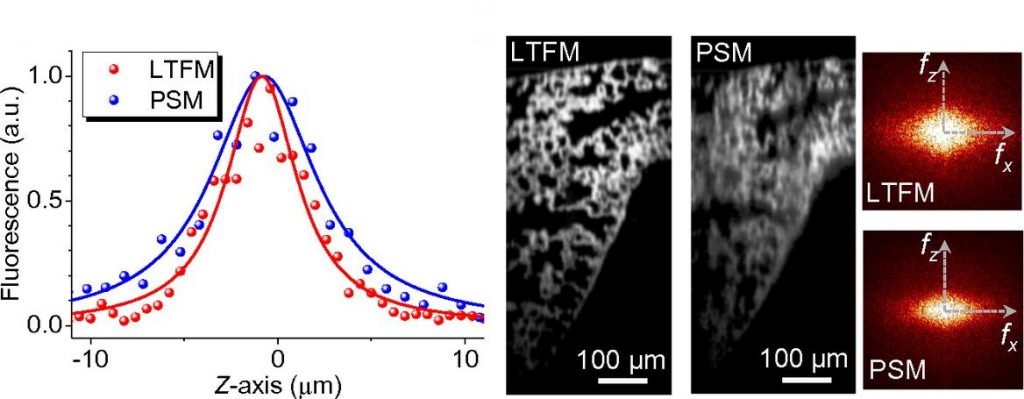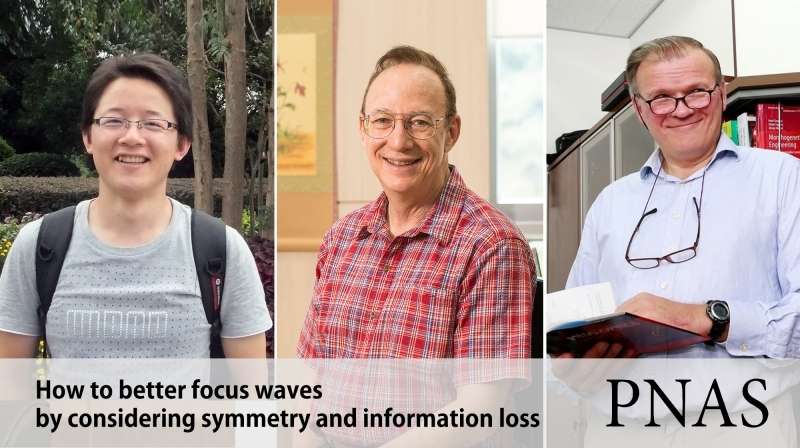An international team of researchers, affiliated with UNIST has announced that they have discovered a new property of wave propagation that leads to an all-new way to improve the resolution of virtually all optical technologies, including microscope lenses, telecommunications, laser-based lithography, and biological and astronomical imaging. Having identified this previously-unsuspected problem, the researchers showed how to remedy it.
This breakthrough comes from a research, conducted by Distinguished Professor François Amblard in School of Life Sciences and his research team at the Center for Soft and Living Matter, within the Institute for Basic Science (IBS) at UNIST.
The cornea, a lens hidden behind your pupils, focuses light from the screen to the back of the eye. However, if the cornea’s horizontal and vertical focusing power are different, this text will appear blurred. For instance, the vertical and horizontal lines which form the letter “T” will not be brought in focus together. To avoid this focusing defect, artificial lenses are optimally designed to change the shape of the light wavefronts from planar into perfectly spherical, because it is believed that spherical wavefronts necessarily focus at their unique center of curvature. Their findings show that scientists should re-examine this belief and revisit their design strategies.

Information loss by asymmetry and small aperture. (A) A stone falling in a pond produces full circular waves that are centered on the impact point, and those waves would back propagate onto that same point if time could be reversed. Using this time-reversal argument, if one generates back propagating circular waves from a limited arc, they will not necessarily focus at the center. (B) Representation of how diffraction effects compete with focusing for a beam of different initial size, that is different aperture.
Examples of wave propagation are circular waves created by a pebble dropped into a pond. The exact point where the pebble hits the water determines the position and the shape of the waves. If you could go back in time, those circular waves would refocus on the initial impact point precisely, because the information on the point location is not lost. This 2D example can be extended to a 3D situation, where waves are spherical and refocus exactly at the center of the sphere. However, this is not the case in real life.
“A full spherical wave is symmetric and has its focus exactly at the center of the sphere. However, to keep this spherical symmetry, light should propagate in all directions onto the sample. And this virtually never happens,” says Distinguished Professor Amblard, co-author of the study.
In the case of the pond, this would be similar to going back in time to try to refocus a limited wave arc, instead of the full circle: they would not necessarily converge into the same impact point, meaning that information about the center location is lost. “Practically, wavefronts are passed through an aperture that is limited to a portion of a sphere. Consequently, spherical symmetry is broken and information is lost,” continues Distinguished Professor Amblard.

Astigmatism occurs when light rays to focus in more than one place causing blurry or distorted vision.
The IBS team has explained and given experimental proof that, as the aperture gets smaller, the focus shifts more and more backwards towards the lens, such that the initial focus is no longer “in focus.” As a consequence, if the aperture is not equal in the vertical and horizontal planes, focal shifts will differ between these directions, leading to astigmatism. “Astigmatism can occur even with the most perfect lens if it is used with a non-circular aperture,” explains Kai Lou, first author of the study.
The team applied the idea to improve a technique called line-temporal focusing microscopy (LTFM, also named spatiotemporal focusing), which makes use of a naturally asymmetric input beam. As LTFM is a method used to visualize deep biological structures, the researchers tested their focal shift correction strategy with mouse lung tissues. An unprecedented resolution was obtained that even outperformed a classical technique called point scanning microscopy (PSM).

Comparison of two bioimaging techniques: line-temporal focusing microscopy (LTFM) and point scanning microscopy (PSM). IBS researchers increased LTFM resolution, by restoring the circular symmetry of the LTFM beam. Images of a fluorescently-labelled mouse lung slice show that the improved LTFM achieves a higher resolution than PSM:; a result never reached before.
How does this knowledge help to improve resolution? Even though this effect is very small and can be neglected for ordinary applications, correcting for aperture-induced astigmatism could make a significant difference in delicate systems, like advanced microscopy used to acquire big date. Understanding that astigmatism is intrinsic to the broken circular symmetry could help design corrections tailored to the aperture shape, especially in fields such as astronomy, telecommunication, or with ultrasounds, where non-circular apertures cannot be avoided.
“In the future, we plan to apply aperture-induced astigmatism to even more complex information transfer technologies,” said Distinguished Professor Steve Granick, co-correspondent author of this study. “Moreover, the study opens avenues to basically improve the design of any equipment handling electromagnetic waves, ultrasounds, or particles beams. For example, it also applies to waves, used with space antennas to focus on a satellite or spaceship. We believe it can contribute to design better systems in synthetic microscopic eyesight, telecommunications, and even microwave devices.”
The findings of this research have been published in Proceedings of the National Academy of Sciences of the United States of America (PNAS) on June 13, 2018.
François Amblard
Letizia Diamante
Science Writer and Visual Producer
T: +82-42-878-8260
E:letizia@ibs.re.kr
Story Source
Materials provided by Institute of Basic Science.
Notes for Editors
The online version of the original article can be found HERE.
Journal Reference
Kai Lou, Steve Granick, François Amblard. “How to better focus waves by considering symmetry and information loss,” PNAS (2018). DOI: 10.1073/pnas.1803652115

















